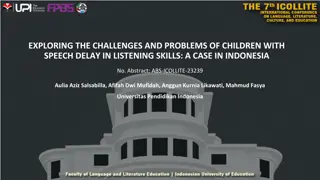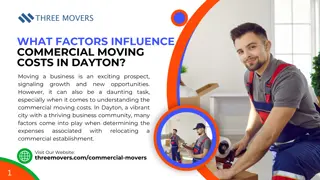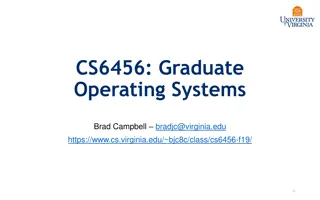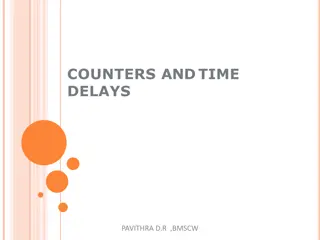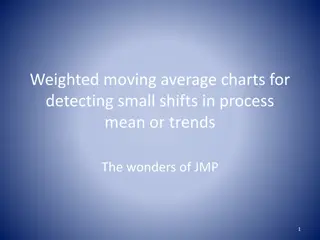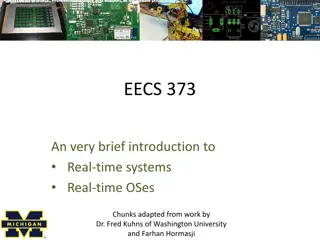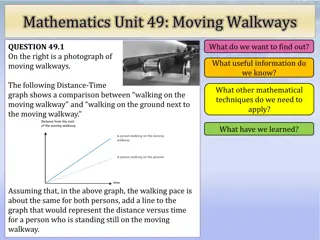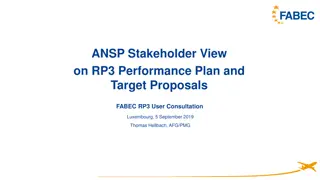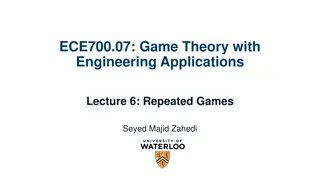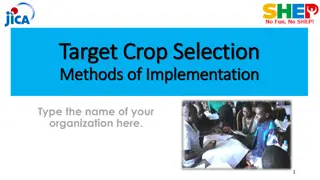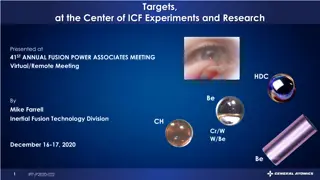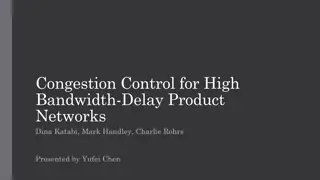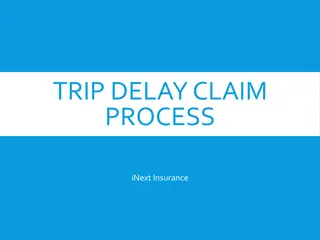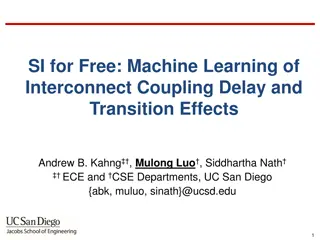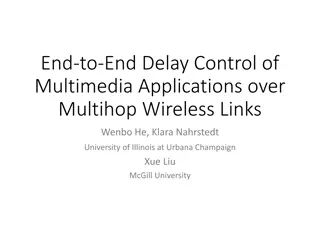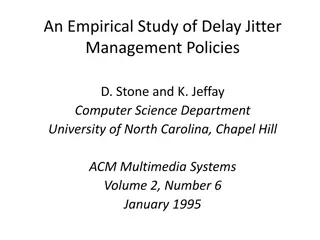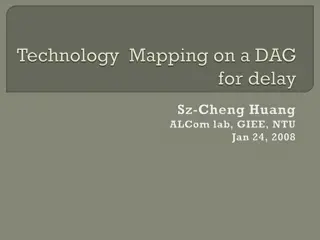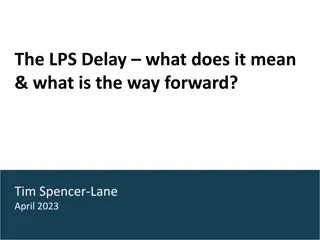Understanding the Effects of Delay on Moving Target Selection in Real-Time Games
Real-time games are highly sensitive to even milliseconds of delay, impacting player performance and quality of experience. This research explores the use of delay compensation techniques to mitigate these effects, focusing on moving target selection with a mouse. The study aims to measure and model the impact of delay on player actions and game interactions, considering factors such as time warp, player prediction, and dead reckoning strategies. By investigating the influence of delay on moving targets, this research contributes to enhancing player QoE in gaming environments.
Download Presentation

Please find below an Image/Link to download the presentation.
The content on the website is provided AS IS for your information and personal use only. It may not be sold, licensed, or shared on other websites without obtaining consent from the author. Download presentation by click this link. If you encounter any issues during the download, it is possible that the publisher has removed the file from their server.
E N D
Presentation Transcript
On Models for Game Input with Delay Moving Target Selection with a Mouse Mark Claypool In Proceedings of the IEEE International Symposium on Multimedia (ISM), Invited Paper, San Jose, California, USA, December 11-13, 2016
Introduction Real-time games sensitive to delay Even milliseconds of delay impacts player performance and quality of experience (QoE) Mitigate with delay compensation (e.g., time warp, player prediction, dead reckoning ) But when to apply (what player actions)? And how effective? Need research to better understand effects of delay on games [Claypool, 2006] [Bernier, 2001] 2
Research in Games and Delay Effect of delay on games? 3
Research in Games and Delay Game Genres [Armitage, 2003] [Beigbeder, 2004] Research UT Warcraft EverQuest [Chen, 2006] [Claypool, 2005] Quake Effect of delay on games? [Amin, 2013] 4
Research in Games and Delay Game Genres Research UT Warcraft EverQuest Quake Effect of delay on games? [Hajri, 2011] [MacKenzie, 1992] Research [Raeen, 2011] Target Selection w/Delay Moving Target Selection Target Selection [Fitts Law] [Hoffman, 2012] [Brady, 2015] Input Types 5
Fitts Law [Fitts, 1954] Time to select target 6 http://www.yorku.ca/mack/hci1992-f1.jpg
Fitts Law [Fitts, 1954] Time to select target 7
Fitts Law [Fitts, 1954] Gap distance Width Time to select target Constant (determined empirically) Index of difficulty Robust under many conditions: limbs (hands, feet, lips, head-mounted sight, eye gaze), input devices (mouse, stylus), environments (e.g., underwater), and users (young, old, special needs, impaired). 8
Limitations of Fitts Law One dimension 2 dimensions Change effective width Target shape mostly irrelevant Stationary target moving target Add speed to index of difficulty Time linear or exponential with speed No added delay transmission delay Time linear with delay Missing? 2d, moving target, with delay [MacKenzie, 1992] [Jacacinski, 1980] [Hoffman, 1991] [Hoffman, 2012] [Brady, 2015] Problem statement: Measure and model the effects of delay on moving target selection with a mouse 9
Why Moving Target Selection with Mouse? [Call of Duty, Activision, 2003] [Duck Hunt, Nintendo, 1984] 10 [League of Legends, Riot Games, 2009]
Outline Introduction Methodology Results Conclusion (done) (next) 11
Methodology 1. Develop game Focus player action on target selection Enables controlled delay 2. Conduct user study 3. Analyze results Graphs Model 12
Puck Hunt The Game of Moving Target Selection Time to select puck with mouse 13
Puck Hunt The Game of Moving Target Selection Time to select puck with mouse 5 iterations 1 QoE for each combo 14
Testing Lab Window-less computer lab, fluorescent lilghting Computers: PCs, i7 GHz, 4 GB graphics, 16 GB RAM Monitors: 24 LCD, 1920x1200 Users via email, participant pool and $25 raffle for gift card 15
Measuring Base (Local) Delay Base system delay shown to be significant [Raaen, 2015] 16
Measuring Base (Local) Delay Base system delay shown to be significant [Raaen, 2015] Our system: 100 milliseconds base delay Added to all analysis 17
Outline Introduction Methodology Results Selection time measurement Selection time model Additional analysis Comparison with other games Conclusion (done) (done) (next) 18
Results 32 users Ages 18-26 (mean 21 years) 23 Male, 8 female, 1 unspecified Mean self-rating (1-5) as gamer is 3.6 Play 6+ hours of games per week 19
Selection Time versus Delay Measurement Exponential with delay Low delays, speed doesn t matter High delays, speed makes it even harder 20
Selection Time versus Speed Measurement Mostly linear with speed Somewhat non-linear at high delay 21
Selection Time versus Delay Model Time to select target Exponential with delay Exponential with speed speed-delay interaction term
Selection Time versus Delay Model R2 0.97 F-stat 328 p < 2.2 10-16
Selection Time versus Delay By Skill Delay effects all skill levels Low skill most impacted, high skill least impacted 24
Mouse Clicks versus Delay Users miss more at high speeds May want combined model for gamer performance 25
Comparison with Commercial Games [Beigbeder, 2004] Trends for Puck Hunt similar Suggests results hold for other games 26
Comparison with Commercial Games [Claypool, 2006] Most closely follows first-person avatar perspective model Similar to cloud games [Claypool, 2015] 27
Quality of Experience Linear/logarithmic decrease Independent of speed 28
Discussion Hoffman [5] suggests target selection time linear with delay Our curvature suggests exponential His covers broader range, stop and wait Jagacinski [18] suggests target selection time linearly with speed, Hoffman [19] suggests exponential Both right. Low delay linear, high delay exponential Brady [13] QoE decreases with delay Our results confirm Our model constants hold for target size (100 px), screen resolution (1920x1080) Other settings have other constants Cloud games delay mouse and click (as in Puck Hunt), but traditional games delay only click 29
Conclusion Need to better understand delay on game actions/input Latency compensation and game design that is resilient to delay We measure and model target selection with a delayed mouse Game and user study (30+) with delays from 100-500 ms and 3 target speeds 30
Conclusion Need to better understand delay on game actions/input Latency compensation and game design that is resilient to delay We measure and model target selection with a delayed mouse Game and user study (30+) with delays from 100-500 ms and 3 target speeds Increase in selection time even for low delays (under 200 ms) Sharp increase in selection time for higher delays (300+ ms) Even sharper increase in selection time for fast targets (450 px/s) QoE sensitive to even slight delays (100 ms) Model with exponential terms for speed, delay and combined term fits well 31
Future Work Other model components (e.g., player skill) Other perspectives (e.g., first person) Other game actions (e.g., avatar movement ) Other input (e.g., thumbstick, buttons) 32
Acknowledgements Marco Duran and Matthew Thompson Measuring base delay Conducting user study Ragnhild Eg and Kjetil Raaen Initial Puck Hunt version Experimental design 33
On Models for Game Input with Delay Moving Target Selection with a Mouse Mark Claypool In Proceedings of the IEEE International Symposium on Multimedia (ISM), Invited Paper, San Jose, California, USA, December 11-13, 2016


